Can you grow Aloe vera in your garden as an ornamental plant and harvest its medicinal leaves? Yes, but heed cautions below.
A midsized succulent with tall, slender yellow flowers, Aloe vera is famous for gel that soothes minor burns and skin irritations. Search "Aloe vera" and you'll get dozens of hits for products that use the gel in skin lotions and health-promoting beverages.
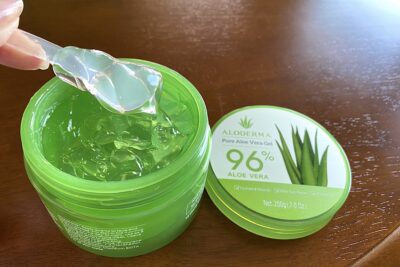
Commercial aloe gel is purified and stabilized, and lacks the sliminess of raw gel.
The plant's effectiveness for a wide range of internal and external ailments is inconclusive, but no one questions the efficacy of Aloe vera for soothing minor burns and skin irritations. Like most aloes, it's from Africa; supposedly Cleopatra used it as a skin softener and moisturizer.
Aloe Vera cautions
If you have an allergy to latex, do NOT ingest raw aloe gel or smear it on your skin. Aloes contain the chemical aloin which causes skin irritation and contact dermatitis in those with a latex allergy.
When harvesting gel, avoid dehydrated leaves because they have a higher aloin-to-gel ratio. When scooping gel from the leaf, avoid getting close to the inner skin where the yellow sap is.
Check fresh gel by submerging it in water. If it turns yellow, keep changing the water until it stays clear.
Aloe vera as a landscape plant
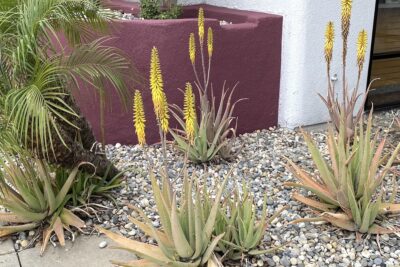
Aloe vera used to landscape a strip mall in Southern CA
In the garden, Aloe vera serves as a nice midsized, ornamental, low-water succulent. Instead of orange flowers typical of the majority of aloes, those of Aloe vera are yellow. Its leaves are tapered, upright, gray-green, and get about waist-high.
Care and propagation
Aloe vera is colony-forming over time. You can simply let it spread slowly, or remove offsets from the base of the plant to give away or transplant elsewhere in your garden.
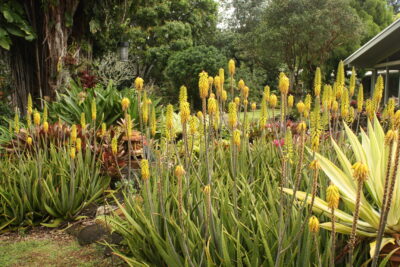
Aloe vera thrives in a garden near Honolulu
Aloe vera plants can be found at nurseries and garden centers. It does well in mild-climate gardens if protected from frost, and tolerates humid as well as dry, hot conditions.
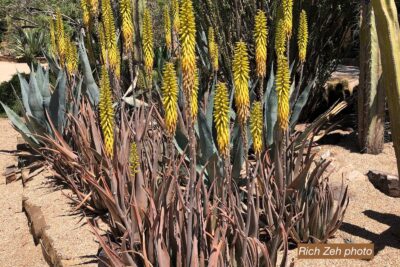
Aloe vera in Rich Zeh's desert garden near Phoenix
Give Aloe vera plenty of sun, weekly watering during dry months, and soil that drains well. You can grow it in pots, and it makes a good windowsill plant, although it's unlikely to bloom indoors.
Other medicinal aloes
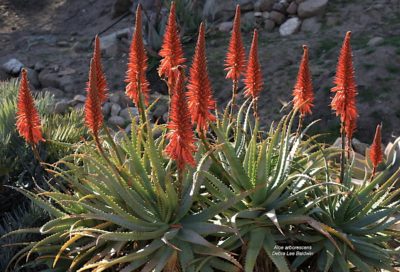
Aloe arborescens
Aloe arborescens (above)---a popular landscape succulent---reputedly offers the same benefits as Aloe vera.
Although other aloes have medicinal properties, not all do. In fact, some are poisonous. Duke Benadom of the Los Angeles Cactus & Succulent Society and author of Superb Succulents researched and compiled this list of medicinal aloes (in blue) and poisonous aloes (in red). Those with an asterisk are treelike.
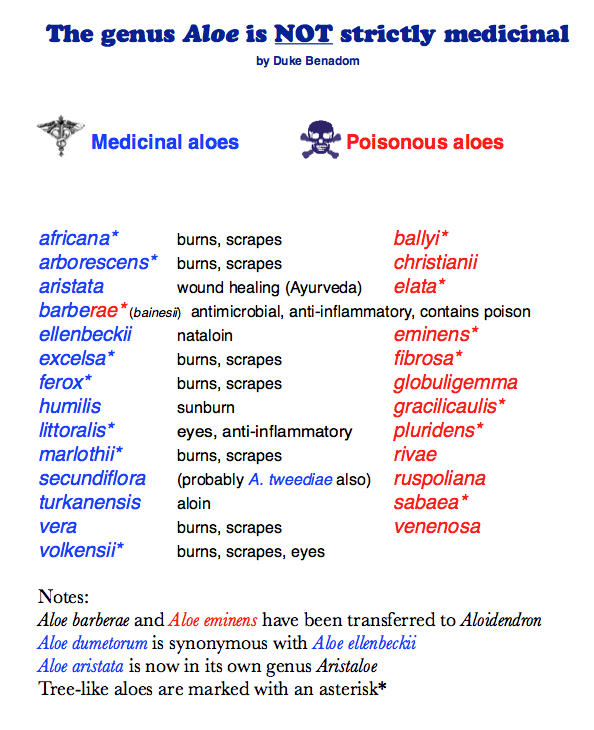
List reproduced with permission. Source: Succulent author and expert Duke Benadom of the LAC&SS.
Related info on this site
Which Aloes Are Best for Your Garden?
One of Southern CA’s in-demand landscape designers, Bill Schnetz of Schnetz Landscape, Inc., likes to use aloes of all sizes in residential gardens. If you love succulents, live in a mild climate, and grow these South Africans in soil that drains well, “they’ll soon become your favorite plants,” Bills says. For a natural setting, he suggests…
Ten Edible Succulents and How to Prepare Them
These ten edible succulents can go from garden to kitchen. Most are fairly easy to obtain, cultivate and prepare. The mucilaginous (goopy) texture of certain edible succulents makes them—to spin it positively—great in soups and stews. Vitamin C is
Aloes: Uses, Photos, IDs & Varieties
Aloes: How To Grow & Varieties All about aloes plus a photo gallery of aloes ID’d and in bloom See All Succulent Types Aeonium Agaves Aloes Cactus Crassula Echeveria Euphorbias Ice Plants Kalanchoe Portulacaria Senecio About Aloes There are dozens of species of Aloe, from tall trees to dwarf cultivars. Aloes typically have juicy, triangular leaves…
The post Why You Should Grow Aloe Vera appeared first on Debra Lee Baldwin. Copyright © Debra Lee Baldwin.
from Debra Lee Baldwin https://ift.tt/6DUpAoM
via IFTTT


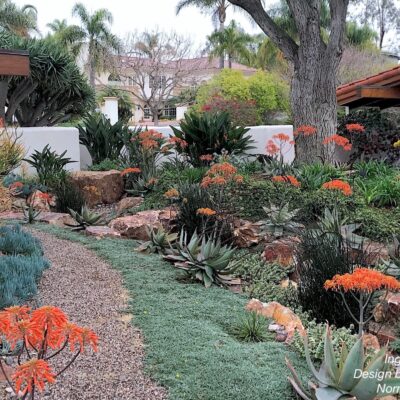

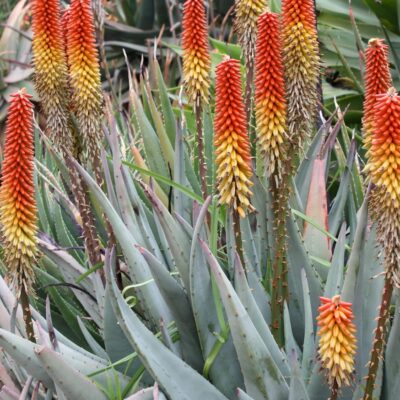
No hay comentarios:
Publicar un comentario